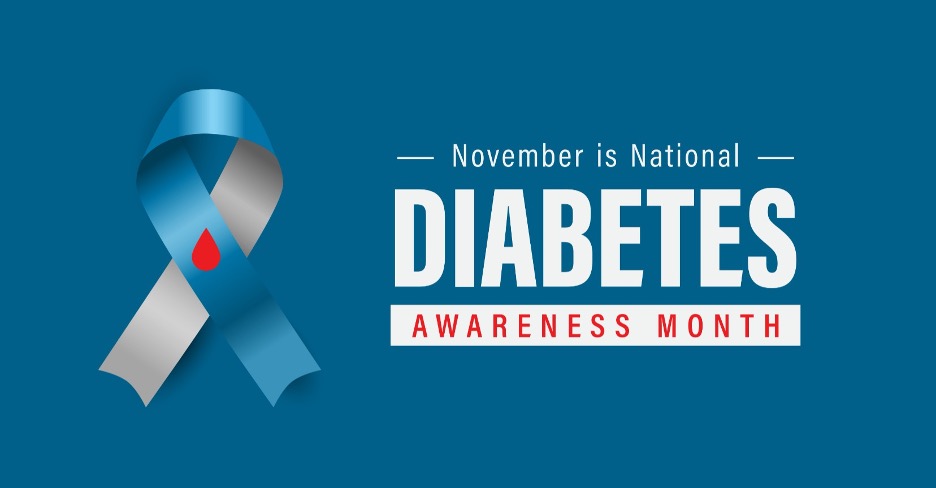Ready, Set, Go This National Diabetes Awareness Month!
Ensure your diabetes toolkit is aligned to the standards of diabetes care for hypoglycemia

Each November, we celebrate National Diabetes Awareness Month. The month is all about raising awareness and promoting efforts to treat and manage it.
Let’s shine a light on managing diabetes, specifically when it comes to very low blood sugar. Recently, there have been changes to recommendations related to who is at risk, namely those taking insulin or sulfonylureas, and the need for those individuals to have glucagon on hand should they need it. 1,2
Unfortunately, when it comes to readiness and treatment, many people with diabetes are unaware of their risk for very low blood sugar and are left without a potentially life-saving ready-to-use glucagon option.
Because National Diabetes Awareness Month beams with empowerment, there is no time like the present to take charge of your diabetes care and ensure that your toolkit is aligned with the guidelines. This month, feel empowered to equip your toolkit with ready-to-use glucagon so that you or your caregiver can be prepared to treat very low blood sugar with confidence. Ready to join the movement? Let’s dive in!
Let’s talk lows
Ever had one of those moments when your blood sugar just dips without a heads-up? Low blood sugar can be sneaky. It can be common in people with diabetes, especially those taking insulin or sulfonylureas.1,2 Not to make things scary, but low blood sugar (hypoglycemia) can happen unexpectedly and requires prompt treatment by eating sugar or a sugar sweetened product. There may be times when correcting with food and drink doesn’t work, when you may be unable to swallow safely, or when you feel like passing out. In cases like this, you don’t want to be caught without ready-to-use glucagon.
Introducing a must-have for your diabetes toolkit.
Gvoke HypoPen® (glucagon injection) is a ready-to-use glucagon rescue pen used to treat very low blood sugar in adults and children ages 2 years and above with diabetes. You can count on it to bring very low blood sugar back up quickly.3* Anyone can administer in 2 simple steps, pull red and push yellow.4,5 You and those around you should review the full Instructions for Use and know where you store Gvoke HypoPen before an emergency happens. You can even self-administer in certain situations. Think of it as your safety net when it matters most, and face very low blood sugar with confidence.
Time for a Diabetes Toolkit Refresh
If you take insulin or sulfonylureas, your toolkit should include ready-to-use glucagon, you should carry it at all times, and know when and how to use it. This November, speak with your doctor about including Gvoke HypoPen® in your diabetes toolkit. Make sure your toolkit is aligned with the standard of care.
National Diabetes Awareness Month is an important time for those affected by diabetes. It’s time to reflect, take action, and advocate for better care.
* In two clinical studies in adults, blood sugar levels that were less than 50 mg/dL increased to above 70 mg/dL or increased by at least 20 mg/dL within 13.8 minutes on average.
References:
- McCall AL, Lieb DC, Gianchandani R, et al. Management of individuals with diabetes at high risk for hypoglycemia: an Endocrine Society clinical practice guideline. J Clin Endocrinol Metab. 2023;108(3):529-562.doi:10.1210/clinem/dgac596
- American Diabetes Association Professional Practice Committee. 4. Comprehensive Medical Evaluation and Assessment of Comorbidities: Standards of Care in Diabetes-2023 [published correction appears in Diabetes Care. 2023 Jun 25;:]. Diabetes Care. 2023;46(Suppl 1):S49-S67. doi:10.2337/dc23-S004
- Gvoke [prescribing information]. Chicago, IL: Xeris Pharmaceuticals, Inc.
- Valentine V, Newswanger B, Prestrelski S, Andre AD, Garibaldi M. Human factors usability and validation studies of a glucagon autoinjector in a simulated severe hypoglycemia rescue situation. Diabetes Technol Ther. 2019;21(9):522-530
- Gvoke HypoPen [instructions for use]. Chicago, IL: Xeris Pharmaceuticals, Inc.
US-GVK-23-00124(v3) 9/25
Indication
GVOKE (glucagon) is a prescription medicine used to treat very low blood sugar in adults and children ages 2 years and above with diabetes.
Important Safety Information
- Do not use GVOKE if you:
-
- Have a tumor in the gland on top of your kidneys, called a pheochromocytoma because of the risk of a substantial increase in blood pressure
- Have a tumor in your pancreas called an insulinoma because of the risk of low blood sugar
- Are allergic to glucagon or any inactive ingredient in GVOKE. Stop using GVOKE and seek immediate medical attention if you experience any symptoms of a serious allergic reaction such as rash, difficulty breathing, or low blood pressure
- Before using GVOKE, tell your doctor about all the medicines you take and your medical conditions, including if you have not had food or water for a long time (prolonged fasting or starvation), have low blood sugar that does not go away (chronic hypoglycemia), or have a history of a skin rash called necrolytic migratory erythema (commonly associated with glucagon-producing tumors)
- The most common side effects reported in adults are nausea, vomiting, swelling at the injection site, and headache
- The most common side effects reported in children are nausea, low blood sugar, vomiting, headache, abdominal pain, high blood sugar, pain or redness at injection site, and hives
- Inform caregivers on the Instructions for Use of GVOKE, and symptoms of severe hypoglycemia, which include unconsciousness and seizures or convulsions
- Store in original container until time of use, and at room temperature between 68°F to 77°F (20° C to 25° C)
- You are encouraged to report side effects of prescription drugs to the FDA. Visit http://www.fda.gov/medwatch or call 1-800-FDA-1088
Please talk to your doctor and see full Prescribing Information and Patient Information Guide for GVOKE.